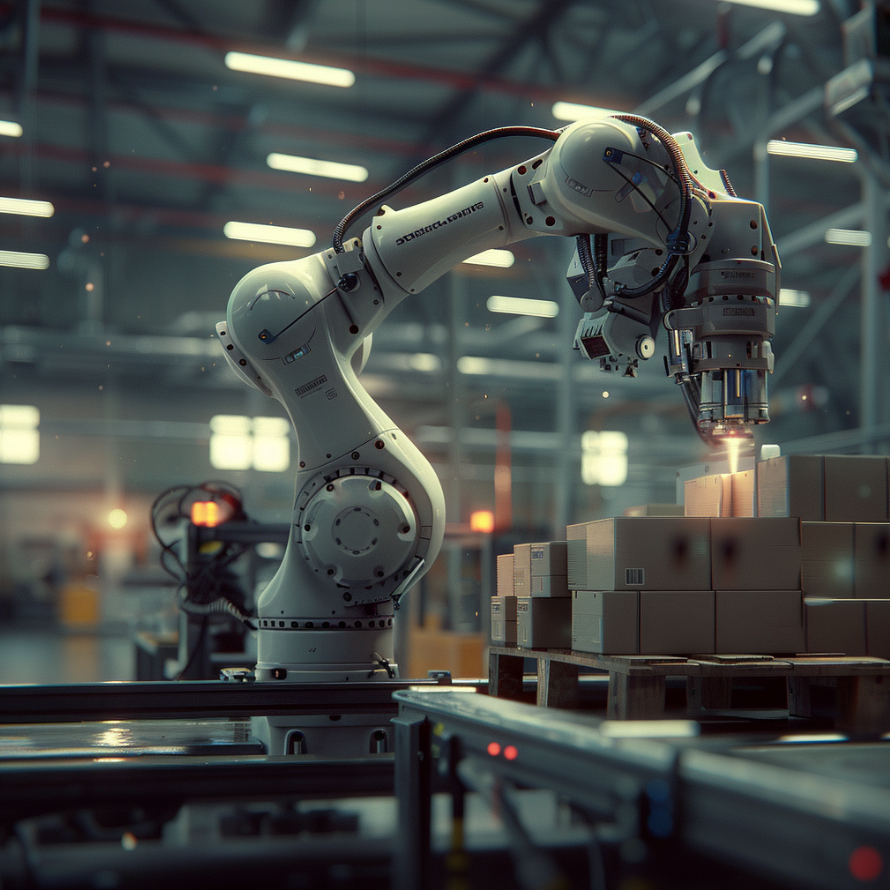

Packaging robots are automated machines designed to assist with product Packaging. They use robotic arms to pick up products, apply labels, fill bags or boxes, seal and tape packages, and more.
These robots run on predetermined programs that tell them exactly what to do and in what order.
Here’s what you gain from implementing them:
Another great benefit? They typically provide a great ROI of just 1-3 years.
Packaging robots use robotic ‘arms’ attached to a stationary base to pick up, move, and pack products.
The arms are powered by motors and can rotate and extend to reach different areas of the packaging line.
Here’s how they work:
Packaging robots can handle a variety of tasks on the production line. We’ve listed them here, ranked best to worst:
In cases where the uniqueness of each item demands extensive reprogramming or retooling, the efficiency gains are offset by the initial high costs and ongoing adjustments, making it the least favorable scenario for deploying robotic Packaging technology.

Not all Packaging robots are created equal, and there are a few features you should look out for before you purchase.
They are:
When you’re ready to invest in Packaging robotics, you’ll want to keep in mind systems from reputable companies with a proven track record of success.
Today, some of the leading manufacturers of Packaging robots include:
US-based Standard Bots are relatively new entrants to the game, but quickly making waves in Industrial robotics.
Their RO1 Collaborative robot (Cobot) is showing its mettle in, unloading, alletizing, pick and place, packaging and sealing.
This robot is customizable, flexible, cost-effective, and backed by powerful state-of-the-art AI.
FANUC is a Japanese pioneer in robotics and automation, including Packaging solutions. They offer Articulated robots, SCARA robots, and Linear robots for picking, placing, palletizing, and depalletizing. FANUC robots are world-renowned for their reliability, precision, and energy efficiency.
Yaskawa, another Japanese company, specializes in robotic automation for manufacturing, including Packaging. They provide a range of Industrial robots for primary and secondary Packaging, including palletizing, case packing, and wrapping. Their robots are praised for speed, performance, and seamless connectivity with production lines.
KUKA is one of the oldest names in robotic automation with over 40 years of industry experience. Their KR AGILUS and KR CYBERTECH robotic series are used for packaging applications such as palletizing, depalletizing, loading and unloading, and pick and place. KUKA's robots have won awards for precision, speed, and their ability to handle complex tasks.
You've just scratched the surface of the capabilities of Packaging robots. One thing’s for sure: with automation on your side, you can take your operations to the next level.
Now, it’s up to you to spend time researching manufacturers and use cases to find the right fit for your shop floor.
Then get ready to sit back and watch your packaging line transform before your eyes!
Looking to upgrade your packaging operations? RO1 from Standard Bots is the ultimate solution for businesses of all sizes, from small and medium enterprises to large industrial entities.
Get in touch with our solutions team for a no-cost, 30-day trial at your facility, which includes expert recommendations for integrating RO1 into your Packaging process seamlessly.